 “Whenever the people are well informed,” Thomas Jefferson wrote, “they can be trusted with their own government.”
“Whenever the people are well informed,” Thomas Jefferson wrote, “they can be trusted with their own government.”
But what happens in a world dominated by complex science? Are the people still well-enough informed to be trusted with their own government? And with less than 2 percent of Congress with any professional background in science, how can our government be trusted to lead us in the right direction?
Will the media save us? Don’t count on it. In early 2008, of the 2,975 questions asked the candidates for president just six mentioned the words “global warming” or “climate change,” the greatest policy challenge facing America. To put that in perspective, three questions mentioned UFOs.
Today the world’s major unsolved challenges all revolve around science. By the 2012 election cycle, at a time when science is influencing every aspect of modern life, antiscience views from climate-change denial to creationism to vaccine refusal have become mainstream.
Faced with the daunting challenges of an environment under siege, an exploding population, a falling economy and an education system slipping behind, our elected leaders are hard at work … passing resolutions that say climate change is not real and astrology can control the weather.
Shawn Lawrence Otto has written a behind-the-scenes look at how the government, our politics, and the media prevent us from finding the real solutions we need. Fool Me Twice is the clever, outraged, and frightening account of America’s relationship with science—a relationship that is on the rocks at the very time we need it most.
S H A W N L A W R E N C E O T T O is the cofounder and CEO of Science Debate 2008, the largest political initiative in the history of science. He is also an award winning screenwriter best known for writing and coproducing the Academy Award–nominated House of Sand and Fog. He lives in Minnesota.
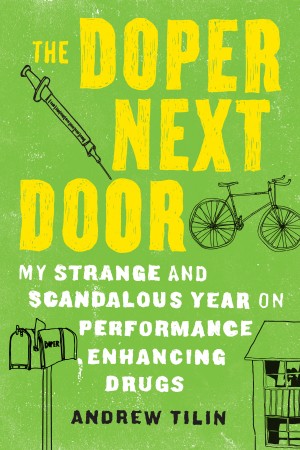 What happens to a regular guy who dopes? Surprised to learn that pro athletes aren’t the only ones taking performance-enhancing substances, journalist Andrew Tilin goes in search of the average juicing Joe, hoping to find a few things out: Why would normal people take these substances? Where do folks get them? Does the stuff really work?
What happens to a regular guy who dopes? Surprised to learn that pro athletes aren’t the only ones taking performance-enhancing substances, journalist Andrew Tilin goes in search of the average juicing Joe, hoping to find a few things out: Why would normal people take these substances? Where do folks get them? Does the stuff really work? After journalist Jessica DuLong was laid off from her dot-com job, her life took an unexpected turn. A volunteer day aboard an antique fireboat, the John J. Harvey, led to a job in the engine room, where she found a taste of home she hadn’t realized she was missing. Working with the boat’s finely crafted machinery, on the waters of the storied Hudson, made her wonder what America is losing in our shift away from hands-on work. Her questions crystallized after she and her crew served at Ground Zero, where fireboats provided the only water available to fight blazes.
After journalist Jessica DuLong was laid off from her dot-com job, her life took an unexpected turn. A volunteer day aboard an antique fireboat, the John J. Harvey, led to a job in the engine room, where she found a taste of home she hadn’t realized she was missing. Working with the boat’s finely crafted machinery, on the waters of the storied Hudson, made her wonder what America is losing in our shift away from hands-on work. Her questions crystallized after she and her crew served at Ground Zero, where fireboats provided the only water available to fight blazes. Clinical trials have become a $24 billion industry that is reshaping every aspect of health care development and delivery in the United States and around the world. Chasing Medical Miracles is the first book to give readers a behind-the-scenes look at the complicated world of clinical trials and how a multibillion-dollar industry of private companies conducting clinical trials with little oversight has quietly become a major part of the American medical establishment. O’Meara reveals what every health-conscious person needs to know about how drugs, devices, and procedures are tested and approved.
Clinical trials have become a $24 billion industry that is reshaping every aspect of health care development and delivery in the United States and around the world. Chasing Medical Miracles is the first book to give readers a behind-the-scenes look at the complicated world of clinical trials and how a multibillion-dollar industry of private companies conducting clinical trials with little oversight has quietly become a major part of the American medical establishment. O’Meara reveals what every health-conscious person needs to know about how drugs, devices, and procedures are tested and approved.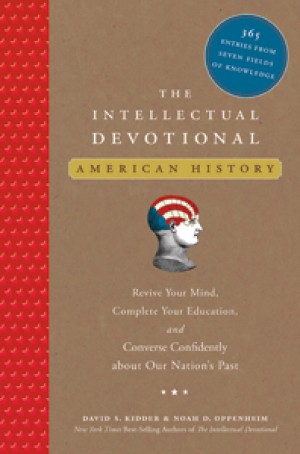 Modeled after those bedside books of prayer and contemplation that millions turn to for daily spiritual guidance and growth, the national bestseller The Intellectual Devotional—offering secular wisdom and cerebral nourishment—drew a year’s worth of readings from seven different fields of knowledge. In this follow-up volume, authors David S. Kidder and Noah D. Oppenheim have turned to the rich legacy of American history for their selections. From Thomas Jefferson and Benjamin Franklin to Martin Luther King Jr., from the Federalist Papers to Watergate, the giant figures, cultural touchstones, and pivotal events in our national heritage provide a bountiful source of reflection and education that will refresh knowledge, revitalize the mind, and open new horizons of intellectual discovery.
Modeled after those bedside books of prayer and contemplation that millions turn to for daily spiritual guidance and growth, the national bestseller The Intellectual Devotional—offering secular wisdom and cerebral nourishment—drew a year’s worth of readings from seven different fields of knowledge. In this follow-up volume, authors David S. Kidder and Noah D. Oppenheim have turned to the rich legacy of American history for their selections. From Thomas Jefferson and Benjamin Franklin to Martin Luther King Jr., from the Federalist Papers to Watergate, the giant figures, cultural touchstones, and pivotal events in our national heritage provide a bountiful source of reflection and education that will refresh knowledge, revitalize the mind, and open new horizons of intellectual discovery. In this fourth installment of the New York Times best-selling Intellectual Devotional series, authors Noah Oppenheim and David Kidder have partnered with Bruce K. Young, MD, to offer a year’s worth of medical knowledge and wellness wisdom. Each daily dose in this infectious volume offers insight into the mysterious terrain of the human body and the factors that impact its constitution.
In this fourth installment of the New York Times best-selling Intellectual Devotional series, authors Noah Oppenheim and David Kidder have partnered with Bruce K. Young, MD, to offer a year’s worth of medical knowledge and wellness wisdom. Each daily dose in this infectious volume offers insight into the mysterious terrain of the human body and the factors that impact its constitution.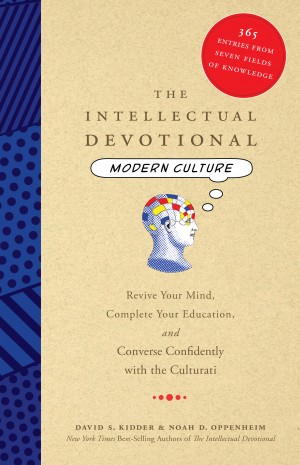 In the tradition of the instant bestsellers The Intellectual Devotional and The Intellectual Devotional: American History comes the third installment in this indispensable series. In The Intellectual Devotional: Modern Culture, the authors explore the fascinating world of contemporary culture to offer 365 daily readings that provide the essential references needed to navigate the world today.
In the tradition of the instant bestsellers The Intellectual Devotional and The Intellectual Devotional: American History comes the third installment in this indispensable series. In The Intellectual Devotional: Modern Culture, the authors explore the fascinating world of contemporary culture to offer 365 daily readings that provide the essential references needed to navigate the world today.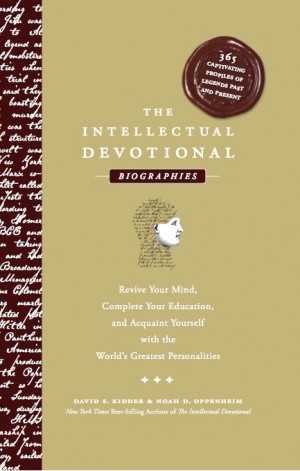 The fifth installment of this best-selling series features 365 captivating entries about the most celebrated personalities in history
The fifth installment of this best-selling series features 365 captivating entries about the most celebrated personalities in history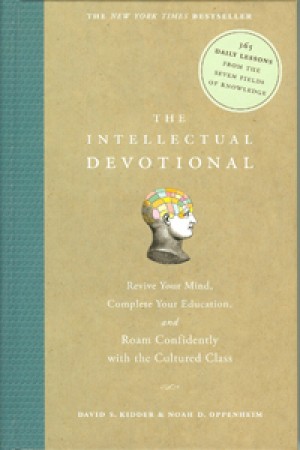 This daily digest of intellectual challenge and learning will arouse curiosity, refresh knowledge, expand horizons, and keep the mind sharp
This daily digest of intellectual challenge and learning will arouse curiosity, refresh knowledge, expand horizons, and keep the mind sharp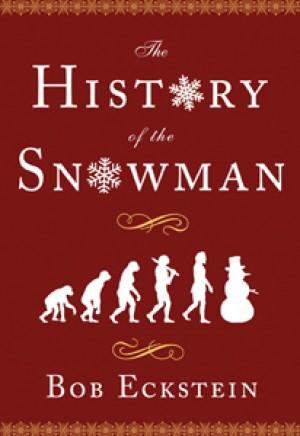 Who made the first snowman? Who first came up with the idea of placing snowballs on top of each other, and who decided they would use a carrot for a nose? Most puzzling of all: How can this mystery ever be solved, with all the evidence long since melted?
Who made the first snowman? Who first came up with the idea of placing snowballs on top of each other, and who decided they would use a carrot for a nose? Most puzzling of all: How can this mystery ever be solved, with all the evidence long since melted?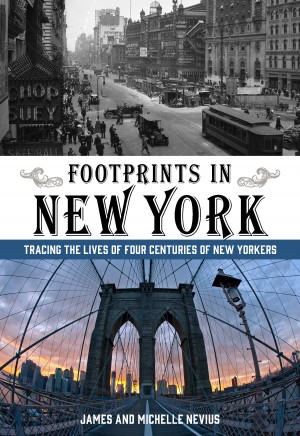 New York City tour guides and authors
New York City tour guides and authors  How much do you actually know about New York City? Did you know they tried to anchor Zeppelins at the top of the Empire State Building? Or that the high-rent district of Park Avenue was once so dangerous it was called “Death Avenue”? Lively and comprehensive, Inside the Apple brings to life New York’s fascinating past.
How much do you actually know about New York City? Did you know they tried to anchor Zeppelins at the top of the Empire State Building? Or that the high-rent district of Park Avenue was once so dangerous it was called “Death Avenue”? Lively and comprehensive, Inside the Apple brings to life New York’s fascinating past.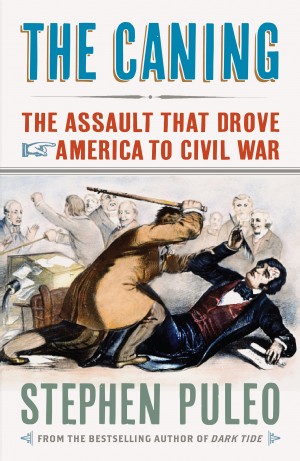 A Turning Point in American History, the Beating of U.S. Senator Charles Sumner and the Beginning of the War Over Slavery
A Turning Point in American History, the Beating of U.S. Senator Charles Sumner and the Beginning of the War Over Slavery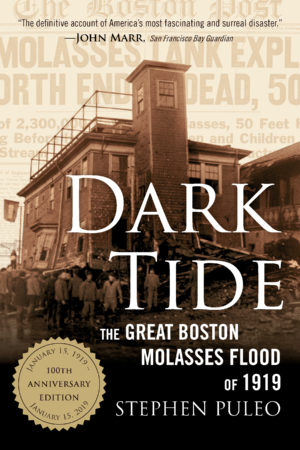 Around noon on January 15, 1919, a group of firefighters was playing cards in Boston’s North End when they heard a tremendous crash. It was like roaring surf, one of them said later. Like a runaway two-horse team smashing through a fence, said another. A third firefighter jumped up from his chair to look out a window-“Oh my God!” he shouted to the other men, “Run!”
Around noon on January 15, 1919, a group of firefighters was playing cards in Boston’s North End when they heard a tremendous crash. It was like roaring surf, one of them said later. Like a runaway two-horse team smashing through a fence, said another. A third firefighter jumped up from his chair to look out a window-“Oh my God!” he shouted to the other men, “Run!” Between 1850 and 1900, Boston underwent a stunning metamorphosis from an insulated New England town into one of the world’s great metropolises—one that achieved worldwide prominence in politics, medicine, education, science, social activism, literature, commerce, and transportation.
Between 1850 and 1900, Boston underwent a stunning metamorphosis from an insulated New England town into one of the world’s great metropolises—one that achieved worldwide prominence in politics, medicine, education, science, social activism, literature, commerce, and transportation.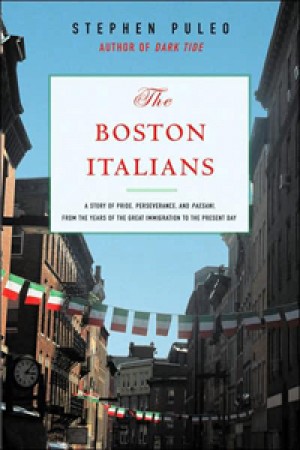 In this lively and engaging history, Stephen Puleo tells the story of the Boston Italians from their earliest years, when a largely illiterate and impoverished people in a strange land recreated the bonds of village and region in the cramped quarters of the North End. Focusing on this first and crucial Italian enclave in Boston, Puleo describes the experience of Italian immigrants as they battled poverty, illiteracy, and prejudice; explains their transformation into Italian Americans during the Depression and World War II; and chronicles their rich history in Boston up to the present day.
In this lively and engaging history, Stephen Puleo tells the story of the Boston Italians from their earliest years, when a largely illiterate and impoverished people in a strange land recreated the bonds of village and region in the cramped quarters of the North End. Focusing on this first and crucial Italian enclave in Boston, Puleo describes the experience of Italian immigrants as they battled poverty, illiteracy, and prejudice; explains their transformation into Italian Americans during the Depression and World War II; and chronicles their rich history in Boston up to the present day. Due to Enemy Action tells for the first time a World War II story that spans generations and straddles two centuries, a story that begins with the dramatic Battle of the Atlantic in the 1940s and doesn’t conclude until an emotional Purple Heart ceremony in 2002. Based on previously classified government documents, military records, personal interviews, and letters between crew members and their families, this is the saga of the courageous survival of ordinary sailors when their ship was torpedoed and their shipmates were killed on April 23, 1945, and the memories that haunted them after the U.S. Navy buried the truth at war’s end. It is the story of a small subchaser, the Eagle 56, caught in the crosshairs of a German U-boat, the U-853, whose brazen commander doomed his own crew in a desperate, last-ditch attempt to record final kills before his country’s imminent defeat. And it is the account of how one man, Paul M. Lawton, embarked on an unrelenting quest for the truth and changed naval history.
Due to Enemy Action tells for the first time a World War II story that spans generations and straddles two centuries, a story that begins with the dramatic Battle of the Atlantic in the 1940s and doesn’t conclude until an emotional Purple Heart ceremony in 2002. Based on previously classified government documents, military records, personal interviews, and letters between crew members and their families, this is the saga of the courageous survival of ordinary sailors when their ship was torpedoed and their shipmates were killed on April 23, 1945, and the memories that haunted them after the U.S. Navy buried the truth at war’s end. It is the story of a small subchaser, the Eagle 56, caught in the crosshairs of a German U-boat, the U-853, whose brazen commander doomed his own crew in a desperate, last-ditch attempt to record final kills before his country’s imminent defeat. And it is the account of how one man, Paul M. Lawton, embarked on an unrelenting quest for the truth and changed naval history. In 1969, man landed on the moon; the “Miracle Mets” captivated sports fans; students took over college campuses and demonstrators battled police; America witnessed the Woodstock music festival; Hollywood produced Easy Rider; Kurt Vonnegut published Slaughterhouse-Five; punk music was born; and there was murder at Altamont Speedway. Compelling, timely, and a blast to read, 1969 chronicles the year in culture and society, sports, music, film, politics, and technology. This rich, comprehensive history is perfect for those who survived 1969 or for those who simply want to feel as though they did.
In 1969, man landed on the moon; the “Miracle Mets” captivated sports fans; students took over college campuses and demonstrators battled police; America witnessed the Woodstock music festival; Hollywood produced Easy Rider; Kurt Vonnegut published Slaughterhouse-Five; punk music was born; and there was murder at Altamont Speedway. Compelling, timely, and a blast to read, 1969 chronicles the year in culture and society, sports, music, film, politics, and technology. This rich, comprehensive history is perfect for those who survived 1969 or for those who simply want to feel as though they did. In February 1962, Earle and Rhoda Brooks, a young sales engineer and his schoolteacher wife, left home and friends in Illinois to serve as members of the Peace Corps in Manta, Ecuador. This book is an account of their life in the Peace Corps. The first book ever written by Peace Corps volunteers, it is a revealing chronicle of personal involvement, of people from vastly different cultures learning to know one another on the level of their common humanity.
In February 1962, Earle and Rhoda Brooks, a young sales engineer and his schoolteacher wife, left home and friends in Illinois to serve as members of the Peace Corps in Manta, Ecuador. This book is an account of their life in the Peace Corps. The first book ever written by Peace Corps volunteers, it is a revealing chronicle of personal involvement, of people from vastly different cultures learning to know one another on the level of their common humanity.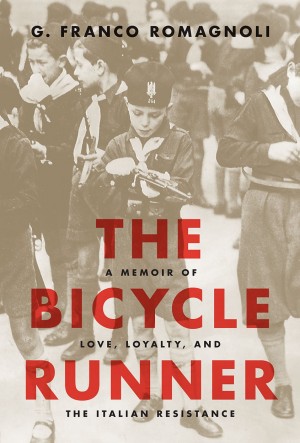 Like all boys growing up in Rome during the 1930s and 1940s, the author was expected to join the Balilla—Italy’s fascist Youth Organization. With political divisions running deep in the families within his palazzo, he and his motley group of friends were recruited into the underground Resistance. Racing around Rome on bicycles, they smuggled messages and weapons for the partisans. Later, the author fled to the Italian countryside and narrowly avoided German mop-up operations—despite being sold out by his most trusted of friends. But this is much more than a war story. Lyrical in language, rich in sentimentality, and possessing the magic of a classic Fellini film, Romagnoli’s memoir is a charmingly told tale of the search for manhood and the bonds of family and friendship.
Like all boys growing up in Rome during the 1930s and 1940s, the author was expected to join the Balilla—Italy’s fascist Youth Organization. With political divisions running deep in the families within his palazzo, he and his motley group of friends were recruited into the underground Resistance. Racing around Rome on bicycles, they smuggled messages and weapons for the partisans. Later, the author fled to the Italian countryside and narrowly avoided German mop-up operations—despite being sold out by his most trusted of friends. But this is much more than a war story. Lyrical in language, rich in sentimentality, and possessing the magic of a classic Fellini film, Romagnoli’s memoir is a charmingly told tale of the search for manhood and the bonds of family and friendship. In the 1960s, the Republican Party began to win over a crucial demographic: white male voters. Presidential politics was transformed for a generation.
In the 1960s, the Republican Party began to win over a crucial demographic: white male voters. Presidential politics was transformed for a generation. For the uninitiated, the quinceañera celebrates the passage of a fifteen-year-old girl into adulthood: It’s a bit bat mitzvah with a dash of debutante ball, and loaded with the same potential for hilarity and adolescent angst. In this original anthology, fifteen of the brightest and funniest Latino writers, men and women alike, share their own memories of these moving and often absurd extravaganzas—tales of that unique form of familial humiliation that is borne of the best intentions, fierce love, and the infectious joy of parents finally allowing their little girl to grow up.
For the uninitiated, the quinceañera celebrates the passage of a fifteen-year-old girl into adulthood: It’s a bit bat mitzvah with a dash of debutante ball, and loaded with the same potential for hilarity and adolescent angst. In this original anthology, fifteen of the brightest and funniest Latino writers, men and women alike, share their own memories of these moving and often absurd extravaganzas—tales of that unique form of familial humiliation that is borne of the best intentions, fierce love, and the infectious joy of parents finally allowing their little girl to grow up.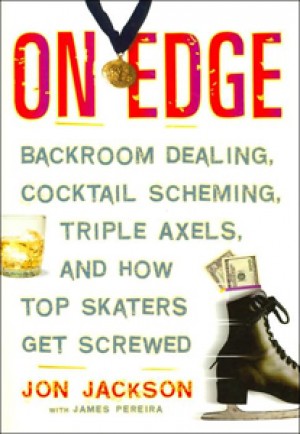 Figure skating is the second most watched sport on television after NFL football, commanding lucrative endorsements and fame for its stars. Yet, the real action of figure skating takes place off the ice, behind closed doors. Until now, no one in skating’s inner circle has dared to expose the dirty little secrets of the seemingly pristine sport: it would have signaled an end to his or her career. Jon Jackson, a former Olympic level judge and competitive figure skater, has already ended his, and he is ready to talk. During the 2002 Winter Olympic Games, the Russian gold medal debacle in the Pair Event publicly revealed the hidden world of bribery and collusion that is standard operating procedure across the sport. On Edge, takes readers on a twenty year journey through the private hotel rooms and hospitality suites where the culture thrives and multiplies, culminating in the days, weeks, and months following the Salt Lake City gold medal scandal. Rebelling against this covert culture, Jackson co-created the World Skating Federation in hopes of freeing the industry from the stranglehold of the seemingly omnipotent US Figure Skating Association (USFSA). Detailing his battle, Jackson reveals his reservations about the continued corruption.
Figure skating is the second most watched sport on television after NFL football, commanding lucrative endorsements and fame for its stars. Yet, the real action of figure skating takes place off the ice, behind closed doors. Until now, no one in skating’s inner circle has dared to expose the dirty little secrets of the seemingly pristine sport: it would have signaled an end to his or her career. Jon Jackson, a former Olympic level judge and competitive figure skater, has already ended his, and he is ready to talk. During the 2002 Winter Olympic Games, the Russian gold medal debacle in the Pair Event publicly revealed the hidden world of bribery and collusion that is standard operating procedure across the sport. On Edge, takes readers on a twenty year journey through the private hotel rooms and hospitality suites where the culture thrives and multiplies, culminating in the days, weeks, and months following the Salt Lake City gold medal scandal. Rebelling against this covert culture, Jackson co-created the World Skating Federation in hopes of freeing the industry from the stranglehold of the seemingly omnipotent US Figure Skating Association (USFSA). Detailing his battle, Jackson reveals his reservations about the continued corruption. Why, in the minds of most Americans, are Latinas still thought of as maids, seductresses, and booty-shaking salsa divas?
Why, in the minds of most Americans, are Latinas still thought of as maids, seductresses, and booty-shaking salsa divas? The emotional highs and lows, the romantic escapades and the financial setbacks, the moments of comedy, anxiety, and personal tragedy—they’re all brought vividly to life in Things to Bring, S#!t to Do, the first memoir told entirely in lists. Annotated with Karen’s insightful recollections, the book presents a compelling portrait—sometimes touching, sometimes hilarious—of a woman, her family, and her friends from 1970s America to the present day.
The emotional highs and lows, the romantic escapades and the financial setbacks, the moments of comedy, anxiety, and personal tragedy—they’re all brought vividly to life in Things to Bring, S#!t to Do, the first memoir told entirely in lists. Annotated with Karen’s insightful recollections, the book presents a compelling portrait—sometimes touching, sometimes hilarious—of a woman, her family, and her friends from 1970s America to the present day.  Spellbinding courtroom illustrations of the most talked about trials of the last 25 years are coupled with insider observations and case summaries in this unique collection of poignant moments from infamous cases. Sketches of O. J. Simpson staring passively ahead while a projected image of his battered wife looms behind him and the parade of beautiful call girls present at the Heidi Fleiss trial are brought to life in the 200 vividly colored images. Courtroom commentary from the artist supplements the art from each trial and includes highlights and lowlights, verdict summaries, and reactions to the verdicts from the trial participants. Major and minor celebrities’ cases are covered, including those of Clint Eastwood, Snoop Dogg, Winona Ryder, Courtney Love, Dolly Parton, and Dustin Hoffman.
Spellbinding courtroom illustrations of the most talked about trials of the last 25 years are coupled with insider observations and case summaries in this unique collection of poignant moments from infamous cases. Sketches of O. J. Simpson staring passively ahead while a projected image of his battered wife looms behind him and the parade of beautiful call girls present at the Heidi Fleiss trial are brought to life in the 200 vividly colored images. Courtroom commentary from the artist supplements the art from each trial and includes highlights and lowlights, verdict summaries, and reactions to the verdicts from the trial participants. Major and minor celebrities’ cases are covered, including those of Clint Eastwood, Snoop Dogg, Winona Ryder, Courtney Love, Dolly Parton, and Dustin Hoffman. In 1969 four young men–two budding entrepreneurs who really wanted to write sitcoms, a former head shop proprietor turned rock band manager, and a record company executive who smoked hash in his office–had a dream: to produce the greatest rock concert ever held. Little did they know how enormous a reality their dream would become.
In 1969 four young men–two budding entrepreneurs who really wanted to write sitcoms, a former head shop proprietor turned rock band manager, and a record company executive who smoked hash in his office–had a dream: to produce the greatest rock concert ever held. Little did they know how enormous a reality their dream would become.